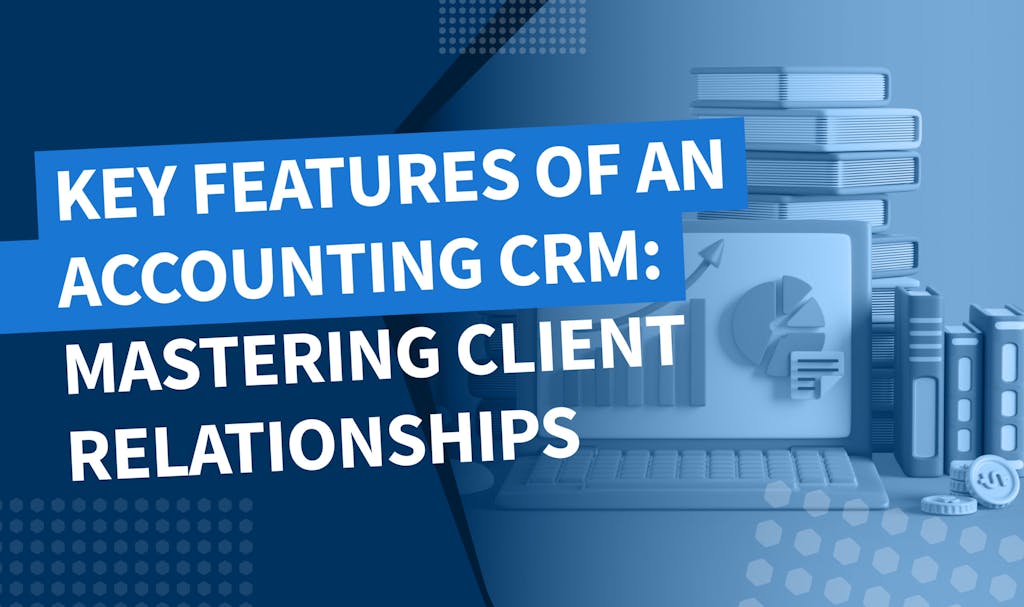
Closing the Deal Faster: Common Client Objections Related to The Accounting Business
A client’s objection can make accounting firms feel frustrated and at a loss of what to do to grow their business. However, if you’ve spent time to learn about a business, create a well-planned proposal and a prospect declines it even though it addresses their needs, all isn’t lost.
Rejection and objection from clients are normal, but knowing how to manage objections properly leads to success.
You may be able to take one or more critical steps to land more clients, improve customer conversions, build your business and say “goodbye” to your frustration.
Manage Objections by Knowing What to Offer Clients
Overcoming client objections is difficult when you allow emotions to get in the way of your business. Unfortunately, for every client that jumps for joy at your proposal, there will be others that simply won’t like it.
However, your response to the objection can lead to a “yes.”
Selling your proposal to a client won’t work 50% of the time – it may only work 10% of the time. It takes a lot of work to gain the trust and business of an owner or decision-maker. The key way to manage an objection is to:
- View the rejection positively
- See what you can change in the proposal in the future
- Use every rejection as a chance to improve your selling skills
You must find ways for clients to see value in your service. If you’re able to show a 10% net savings in the first quarter is possible, clients will see the value. Knowing what to offer clients takes a lot of time, so be ready to learn about their business.
You can spend 3x less time on admin tasks and invest this time in offering more value to clients.
Wondering how? We'll show you how to automate admin tasks.
Join demoBetter yet, conduct research on businesses in an industry that you know, determine whether you think your services may be useful to them, and try and make proposals to these clients. Many accounting businesses will focus on a specific industry or niche because they’ll learn and understand:
- Key pain points for the business
- What services these businesses need most
- How to create highly converting proposals
Common Objections Clients Have to Accounting Services, And How to Address Them
Over time, as your business grows, you’ll start to see common client objections pop up time and time again. You should be documenting each and every reason for a proposal not being approved so that you can learn how to address them properly in the future.
A few of the many reasons that a proposal isn’t approved are:
It’s Too Expensive
Take a moment to consider one of the primary reasons many proposals aren’t approved: price. Chances are, you’ve rejected a proposal in the past strictly based on price. However, it’s not uncommon for businesses to underinvest in their business.
First, analyze your own pricing to ensure that it aligns with the market rates and is a fair price for the service you’re offering.
If you need to readjust your pricing or offer a little less for a lower price, do so. Otherwise, it may not be that expense was the key factor in objection. Some businesses don’t invest enough in financial and accounting services.
Why?
They don’t see the value in the service. If you can make it easy for the business to see this value, your chances of a proposal being accepted rise dramatically.
I Don’t See the Value of That
Value is important for each proposal you create. You’re asking a business to spend money, and they want to know what they’ll get in return. It’s up to you to explain to the company:
- What each service provides
- How each service offers values
The value may be difficult to see, so it’s up to you to change that for the client. For example, if you can save a client 10% on their expenses, it’s an easy sell, and your proposal is likely to be accepted.
However, if this isn’t the case, find ways to demonstrate value.
A few ways to learn about your own proposal’s value is to ask the following questions:
- What pain point will the proposal solve?
- What business functions will you help with?
- What will the business lose by not accepting the proposal?
If the business loses nothing from declining a proposal, it’s time to rework what you’re offering. A loss doesn’t need to be monetary – not fully. For example, let’s assume that the proposal will help streamline operations and save many manhours per week.
Explaining that the manhours saved will have an impact on net income, free up manhours and boost productivity demonstrates the value of the proposal clearly.
We Can Do It Ourselves
Businesses almost train themselves to do a little of everything when first starting. For example, an owner with little capital may work in sales, accounting, marketing and others to help the business grow.
However, this “hustle” also leads businesses to:
- Try and do everything on their own
- Reject offers
- Not see the net loss of doing everything on their own
You’re a professional in your field, and over the years, you’ve learned how to work efficiently. When clients think that they can take your services in-house, it’s up to you to show how that will cost more money than the business will save.
Let’s use bookkeeping as an example of a service that you’re proposing and the customer rejects.
You can explain and show the customer that bookkeeping is:
- Complex
- Error-prone
You know the ins and outs of bookkeeping. Explain, ideally in the proposal itself, that if errors are made in a company’s books, they’ll take far more time and money to fix. Using a bookkeeper from the start makes it possible to reduce errors, save money, and focus more on income-generating tasks.
The Common Thread Behind Clients Objecting to Your Services
Answers to objections will start to materialize over time. Even the best service in the world will face rejection. The one thread that links your proposal to acceptance or objection is certainty.
If the person reading the proposal is certain it’s in their business’s best interest, they’ll accept.
Your role in this acceptance requires you to:
- Master communication
- Break your service down step-by-step
- Explain how each step will ease a pain point
If your proposal is convincing, you’ll win more clients over. Remember: the only way to reduce objections is to show value.
How Do You Handle Challenges from Clients?
Do you know how to handle objections? If not, you’ll learn. The truth is that objections hurt, and so do the challenges of business. The worst feeling is becoming emotionally attached to a client’s business that you’re sure your firm will be a good fit for only to be rejected.
If the engagement occurs from the prospect first, you’re far more likely to land the client.
However, every business needs to reach out to potential customers and even convince current customers that your new proposal is in their best interests. In fact, there are plenty of times when you may think a current client will say no to your offer and they are very responsive to it.
Alternatively, there are going to be clients that you’ve worked with for years that are either very reluctant or simply object to a proposal.
There are a lot of ways to handle these challenges.
Set the Bar for Successful Client Relationships
If you’re forceful with a proposal and client, you’ll quickly lose the client’s trust and business. You can never decide what’s in a client’s best interest for them. Instead, you should learn how to explain and sell the value of the services that you’re offering.
Value will always be a proposal’s selling point.
Clients will often get in their own way, and you will, too, when you make assumptions. You can set the bar for a successful relationship by:
- Never forcing a client
- Demonstrating a proposal’s value
- Remaining flexible
- Pricing your proposal adequately
If you devise a proposal that you’re sure can benefit a business, present it and remain confident. Handling client objections is possible if you have a bit of confidence, do your due diligence and remain flexible to any adjustment requests.
How Do You Manage Client Objections?
Client objections are never easy to accept, but you do need to manage them properly. One way to deal with objections is to convince clients that a long-term relationship is in their best interest.
One way to do this is to provide impeccable service year after year.
Loyalty in business is also important. Perhaps the client objects due to major life or business changes. Try and be understanding and offer services that can best help them through this difficult time.
How Do You Manage Advisory Fee Questions?
Businesses will try and negotiate on fees and services. The client may ask for a deal, and you need to find a tactical way to respond. One trick is to not accept a lower fee, but instead, offer something that may make the deal more attractive.
You may:
- Offer an additional month of service
- Offer free training
If you lower your price or provide steep discounts, this will lead to your services being undervalued.
Understanding How to Handle Client Curve Balls
Finally, there will be times when clients throw you a curveball. The client may blatantly state no to your service, and it can be very difficult to respond. You may need to simply walk away from the proposal.
However, you may also adjust the proposal or make one last attempt to show the value you’re offering.
Unfortunately, you won’t be able to convince everyone to accept the proposal, which you also need to understand.
Conclusion
Business is all about convincing others that you’re offering them something of value that they currently do not have. Proposals should be customized, well-planned and show how your service is too difficult to say “no” to.
Over time, you’ll learn how to handle client objections and turn a “no” into a “yes.”
If you follow the advice above, we’re confident that you’ll have an easier time selling your proposals to clients.

Thank you! The eBook has been sent to your email. Enjoy your copy.
There was an error processing your request. Please try again later.
Looking to boost your firm's profitability and efficiency?
Download our eBook to get the answers



